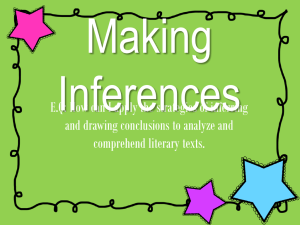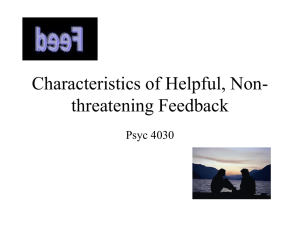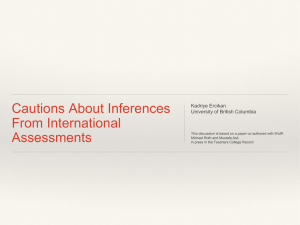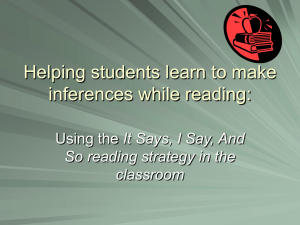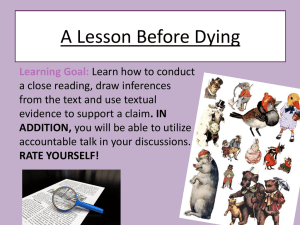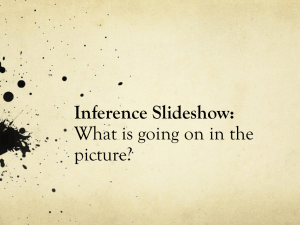Inst. Proj. Inferencing
advertisement
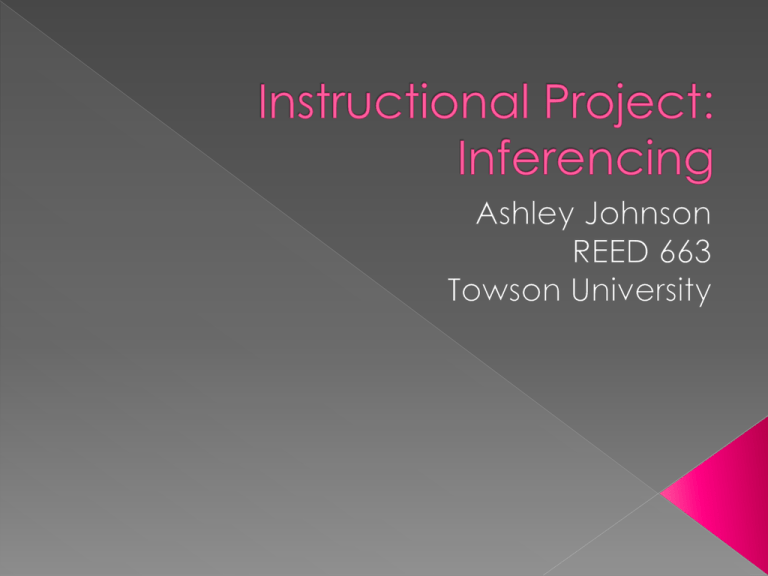
Generating inferences is an essential process that allows for a deeper understanding of a text. Good readers automatically generate inferences before, during, and after reading by using what they already know (background knowledge) and what is in the text(text clues). The four-day lesson was based on a strategy suggested in Strategies that Work by Harvey and Goudvis. Students were encouraged to use their prior knowledge and text clues in order to make inferences about characters’ feelings, what was happening in the story, and words in the text not understood. The texts chosen for this project were ideal for generating inferences with detailed pictures and scenarios that students could relate to. The lesson began with modeling and whole group sessions, which lead to guided practice and finally independent practice with texts on their level. Fly Away Home by Eve Bunting › A young boy and his father are homeless and have chosen an airport as their new home. The boy feels that they may be there forever but when he sees a small bird trapped in the airport escape, he knows that he too will be free one day. Alexander, Who Used to be Rich Last Sunday by Judith Viorst › Alexander receives a dollar from his grandparents but due to his carelessness he ends up without anything at all. A Boy, a Dog, and a Frog by Mercer Mayer › In this wordless picture book, a boy, his dog, and a frog have quite the adventure when the boy attempts to go fishing. A New Friend (Harcourt Storytown Leveled Reader) › The barn animals hear a sound on the barn roof and little do they know it will result in a new friend. Modeling/Guided Practice (Days 1, 2, & 3) › Inferencing was introduced through a charades game where I had the students act out a feeling and the remaining students had to guess. › I introduced the idea of BK + TC = I (background knowledge + text clues = inference) from the Strategies that Work text. › As a whole group, the students and I explored making inferences using A Boy, a Dog, and a Frog. › Being that there are no words in the text, students had to dig deep to figure out what was going on in the text. › Using Fly Away Home by Eve Bunting, I modeled how to make inferences and recorded them. › Using a flipchart I found on Promethean Planet (attached to the board post), students were guided to make inferences. › This help the students to better see how to stop while reading to generate inferences. › As we read Alexander, Who Use to be Rich Last Sunday, we worked together to make inferences and complete an organizer together. › This discussion was my favorite part because I was able to hear so much of the students’ thinking. “I can tell that Alexander’s brother isn’t very nice because he tells him to go buy a new face. And I know that is not a nice thing to say to someone.” Independent Practice (Day 4) › To be able to complete the strategy independently, my students needed text on their level. I chose a first grade leveled reader from Harcourt Storytown. The students read independently and completed an organizer. Some of the organizer was filled in while they completed the rest. Students did best when we worked together during guided practice. As I facilitated discussion and guided their thinking they made strong inferences that truly deepened their understanding. When working independently, students did well but struggled putting their thoughts on paper. › They had trouble determining what their background knowledge and the text clues were to be able to add them to the chart. My colleague Ashley Button tried the strategies I taught in my classroom and below is her feedback: Mrs. Button spoke to me about her lessons as well. › She said that “her students caught onto the inference generation quickly” after she had spent some time modeling. › It was great to get some feedback from a colleague as far as what I had done with my students. I plan to share my lesson ideas with other teachers as well to share thoughts on inferencing. After teaching these lessons on inferencing, I have learned that this is a strategy that requires a lot of modeling and support. › Students struggled to make inferences on their own when working independently. However, they were able to share a lot when we worked together. I have found that inference generation truly deepens the understanding readers have of a text. I was able to see that prior knowledge does indefinitely play a large role in inference generation. › Students were able to make strong inferences with the texts chosen but teachers should take care to choose texts students can relate or be sure to build upon background knowledge prior to reading. All in all, teaching these lessons simply reinforced my understanding of how important generating inferences is for good readers. Harvey, Stephanie & Goudvis, Anne. (2007). Strategies That Work. Portland, ME: Stenhouse Publishers; Markham, Ontario: Pembroke Publishers Limited




